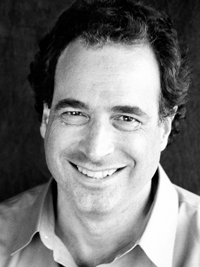NOTE: Images in this archived article have been removed.
 It’s New Economy Week, and PCI Fellow Michael Shuman is sharing 24 Ways to Invest Locally. Each day this week, Post Carbon Institute will roll out four ways you can—right now—begin to move your money from Wall Street to Main Street, and help build a vibrant, more resilient economy in your community.
It’s New Economy Week, and PCI Fellow Michael Shuman is sharing 24 Ways to Invest Locally. Each day this week, Post Carbon Institute will roll out four ways you can—right now—begin to move your money from Wall Street to Main Street, and help build a vibrant, more resilient economy in your community.
TIPS 17-20
(17) Create a Local Mutual Fund – There are 7,500 mutual funds in the United States (in which unaccredited investors can readily invest), but not a single one invests in local small business. But there is no legal reason why a locally focused mutual fund could not be formed. The toughest requirement for mutual funds is that 85% of the fund need to be liquid, and that could be accomplished through local “slow munis.” The other 15% could be local stock.
(18) Lobby Your Pension Fund – In the absence of local pension funds, you can lobby your workplace pension funds to put some money in local stocks and bonds. Most managers of these funds will claim – incorrectly – that local investment is illegal under ERISA. Point out to them that many of the local investments outlined here outperform the US stock market, and therefore are completely legitimate investments for the fiduciaries managing these funds.
(19)
Form a Local Investment Club – You and your friends can form your own investment fund on the cheap by forming a “club.” The legal key is that all your decisions have to be made together, as a group. A great example is
No Small Potatoes, a project of Slow Money Maine.
(20) Prepare a Community List – Knowledge is power. Imagine a local Craig’s List of all the local investment opportunities in your community. A list like this is easy to create and invaluable for potential local investors. As long as the list does not “offer advice” on the quality of various investments, it is completely legal.
Check back every day this week for for more ways to invest in your local economy.
Eggs image via Editor B/flickr
 It’s New Economy Week, and PCI Fellow Michael Shuman is sharing 24 Ways to Invest Locally. Each day this week, Post Carbon Institute will roll out four ways you can—right now—begin to move your money from Wall Street to Main Street, and help build a vibrant, more resilient economy in your community.
It’s New Economy Week, and PCI Fellow Michael Shuman is sharing 24 Ways to Invest Locally. Each day this week, Post Carbon Institute will roll out four ways you can—right now—begin to move your money from Wall Street to Main Street, and help build a vibrant, more resilient economy in your community.





